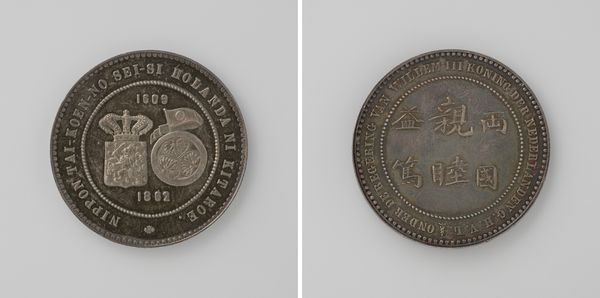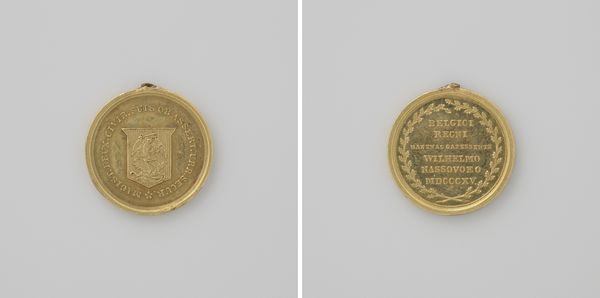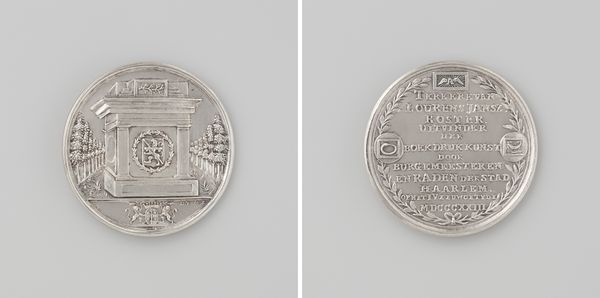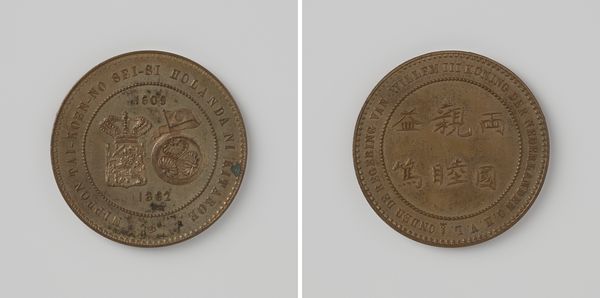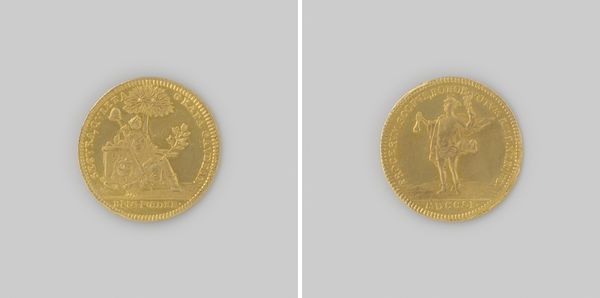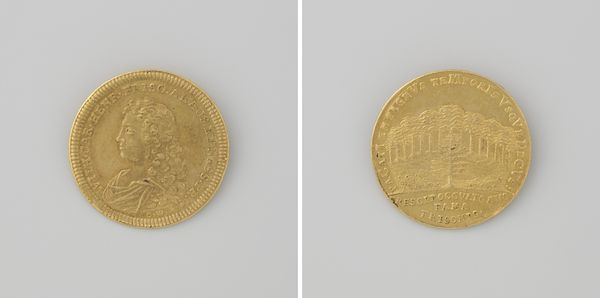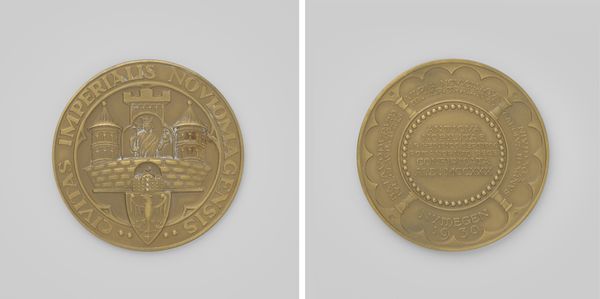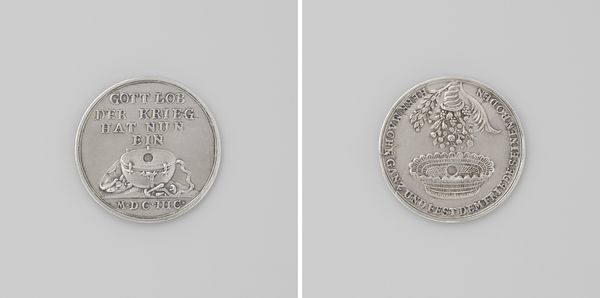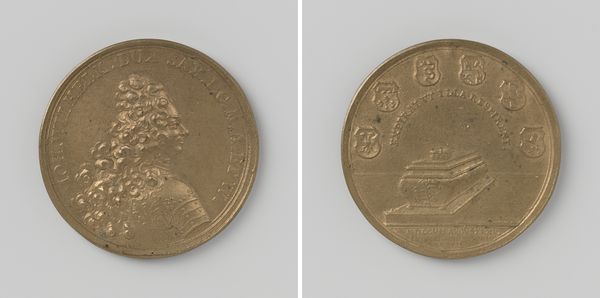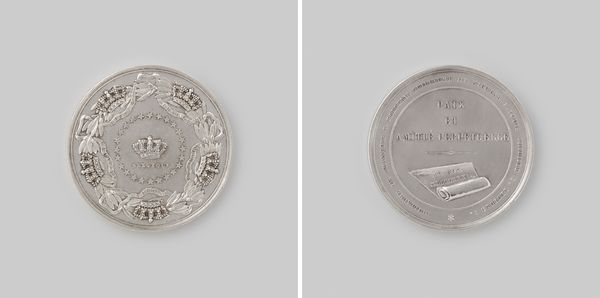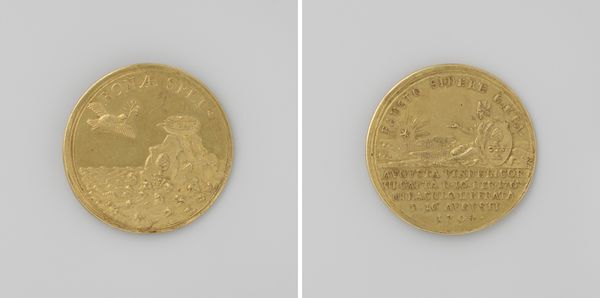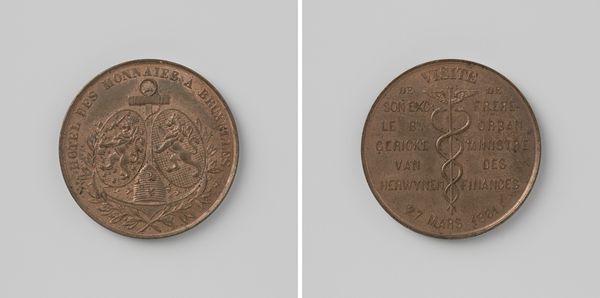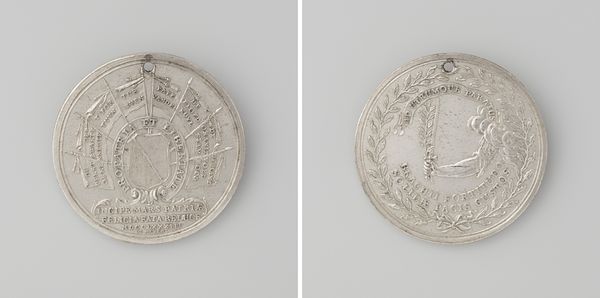
print, metal
studio photography
advertising product shot
product studio photography
natural stone pattern
antique finish
circular oval feature
man-made pattern
metal
asian-art
product fashion photography
polished
golden font
modernism
Dimensions: diameter 3.8 cm, weight 20.9 gr
Copyright: Rijks Museum: Open Domain
Curator: Looking at this commemorative print, titled "400 jaar handelsbetrekkingen Nederland-Japan," what strikes you most? The piece, produced in 2009, reflects on a long history, you know. Editor: Immediately, it's the juxtaposition of languages. It's like a material representation of the exchange itself, but also hints at potential misunderstandings and mistranslations baked into these long-standing relationships. And gold always screams about economics, power. Curator: Indeed. Note how the piece features symbolic dates: 1609 and 1862. These signify crucial points in the relationship between the Netherlands and Japan, marking shifts and continuities. What visual symbols stand out? Editor: The coats of arms feel very… colonial. One side featuring European heraldry, juxtaposed with what looks like the Imperial Seal of Japan. Who designs such commemorative items and with whose authority do they speak? Power is always visualized. Curator: A pertinent question. Medals and coins carry powerful iconography. Often used to disseminate official narratives. How might we deconstruct that narrative today? What stories are left untold or actively repressed in such an object? Editor: We can also interpret that visual balance you point out in terms of power dynamics; trade always has that angle. Does this representation challenge, or rather reinforce, power? Whose narrative are we consuming? Does the very existence of this commemorative piece erase the violence and exploitation integral to so many colonial economic exchanges? Curator: Certainly, examining whose perspective is centered is vital. Considering historical context alongside the chosen symbolism opens up complex layers of meaning embedded in this seemingly simple object. We are now also thinking of contemporary globalization. Editor: Absolutely. Examining it makes me reflect on ongoing issues of fair trade, labor practices, and neo-colonial economic dependencies. Art invites these intersections between the past and the present. Curator: The echoes of history reverberate within such seemingly benign objects. Symbols carry far-reaching implications beyond the initial celebratory narrative. Editor: Absolutely. It serves as a good visual to open up these vital discussions and deconstruct the legacies of these economic relationships that endure to this day.
Comments
No comments
Be the first to comment and join the conversation on the ultimate creative platform.
